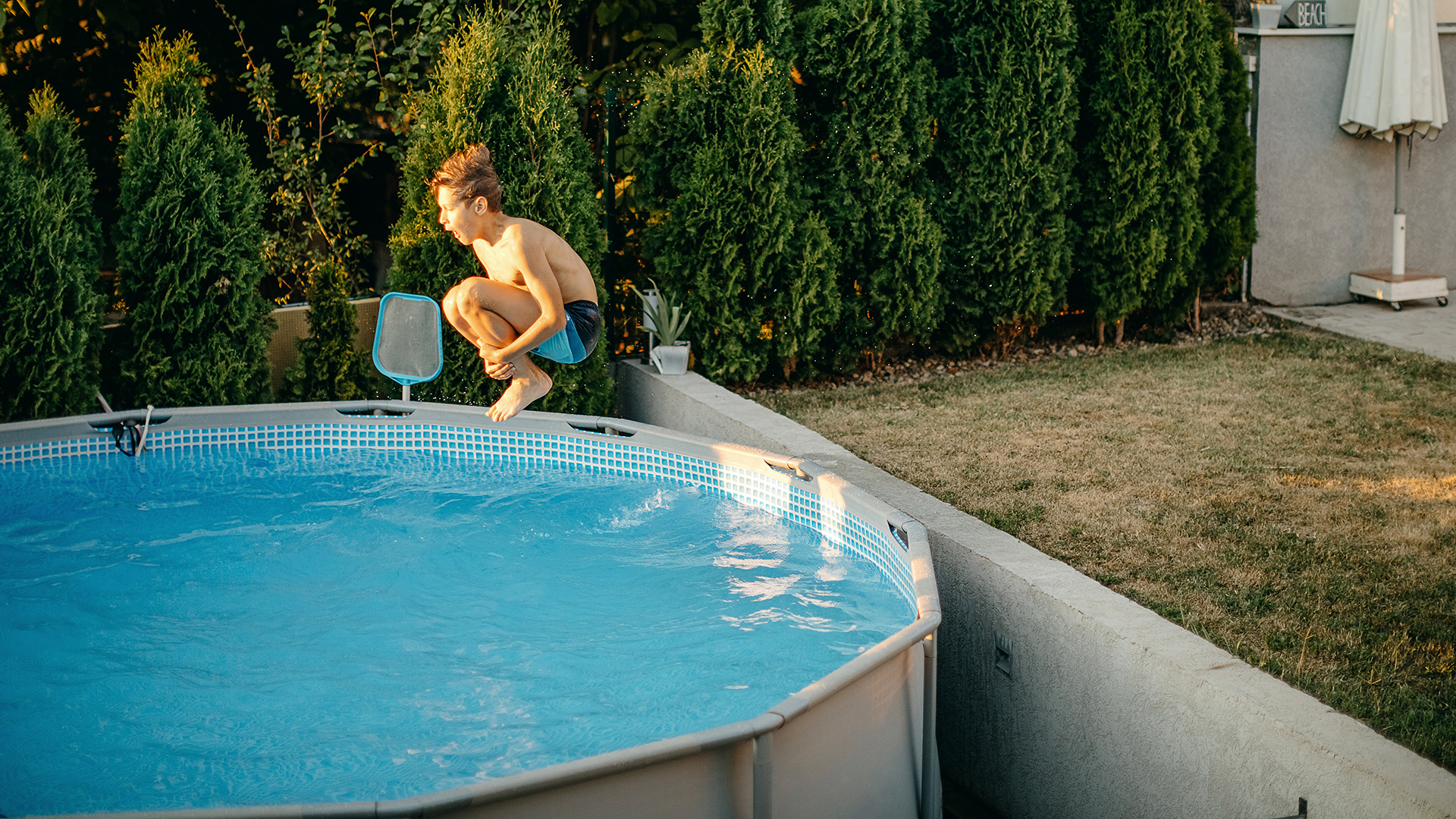If you want to know how to vacuum an above ground pool, you’ve come to the right place. Investing in one of the best pool vacuums is a good start, as they can help you spend less time cleaning and more time swimming.
But first, what’s the difference between an above ground pool and an in-ground one? An above ground swimming pool is one that is not built into the ground. It usually consists of a vinyl liner and a frame made of metal, resin or both. The frame supports the weight of the water, which can be filled with either chlorine or salt water to help keep bacteria out and to maintain the pH level.
Above ground pools are popular because they are easy to set up (and take down) and more affordable than in-ground ones, making them ideal for anyone with limited space or people who don’t want to use the pool all year round.
Pool cleaning is a crucial part of your maintenance routine, as it will help it last longer, as well as protect your family and friends from nasty bugs and illnesses.
In this article we talk to pool cleaning and maintenance expert Karel Williams, who is also a Master Plumber at Emergency Plumbing Squad, about how to vacuum an above ground pool for best results.
How to vacuum an above ground pool
Vacuuming your pool is a normal part of maintenance and is important to keep it in a clean and healthy condition.
Williams says: “The cleaning process is quite similar to vacuuming an in-ground pool, with some slight variations. Here's a step-by-step guide on how to clean an above-ground pool with a pool vacuum.”
1. Prepare your equipment
“Gather the necessary equipment, including a vacuum head, telescopic pole, vacuum hose, and a vacuum plate (if your pool has a skimmer). Assemble your equipment by connecting the vacuum head to the telescopic pole and attaching the vacuum hose to the head.”
2. Turn on the pump and filter system
“Before vacuuming, ensure the pool's pump and filter system is turned on and functioning properly.
3. Lower the vacuum head into the pool
“Slowly lower the vacuum head into the pool, allowing air to escape from the hose. Hold the other end of the hose over a return jet in the pool to remove air from the hose, ensuring optimal suction while vacuuming,” says Williams.
4. Attach the hose to the skimmer or suction port
“Once the hose is free of air, attach it to the skimmer through the vacuum plate or directly into the suction port.”
5. Start vacuuming
Williams says: “Begin vacuuming your above-ground pool, using slow, steady strokes to methodically work your way around the entire pool. Overlap your strokes slightly to ensure complete coverage and avoid stirring up debris. Take your time – rushing the process can lead to missed spots or unsettled debris.”
6. Turn off the pump and remove the vacuum equipment
Williams explains: “Once you've finished vacuuming the pool, turn off the pump and carefully remove the vacuum equipment. Clean the vacuum head and hose, and store them properly for future use.”
7. Check and clean the filter
“Don't forget to check your pool's filter and backwash or clean it as needed to ensure your pool stays in optimal condition,” adds Williams.
Why should you vacuum an above ground pool?
There are several reasons to vacuum an above ground pool. “Vacuuming removes debris like leaves, dirt and algae that can accumulate in your pool, helping to maintain a clean and clear swimming environment,” says Williams.
It also protects the pool's surface. Williams says: “Regular vacuuming prevents debris from staining the pool's surface or causing damage to the liner.”
You should vacuum your pool to maintain water balance, too. Clean pools have better water circulation and filtration, which helps maintain the proper chemical balance of the water, says Williams.

